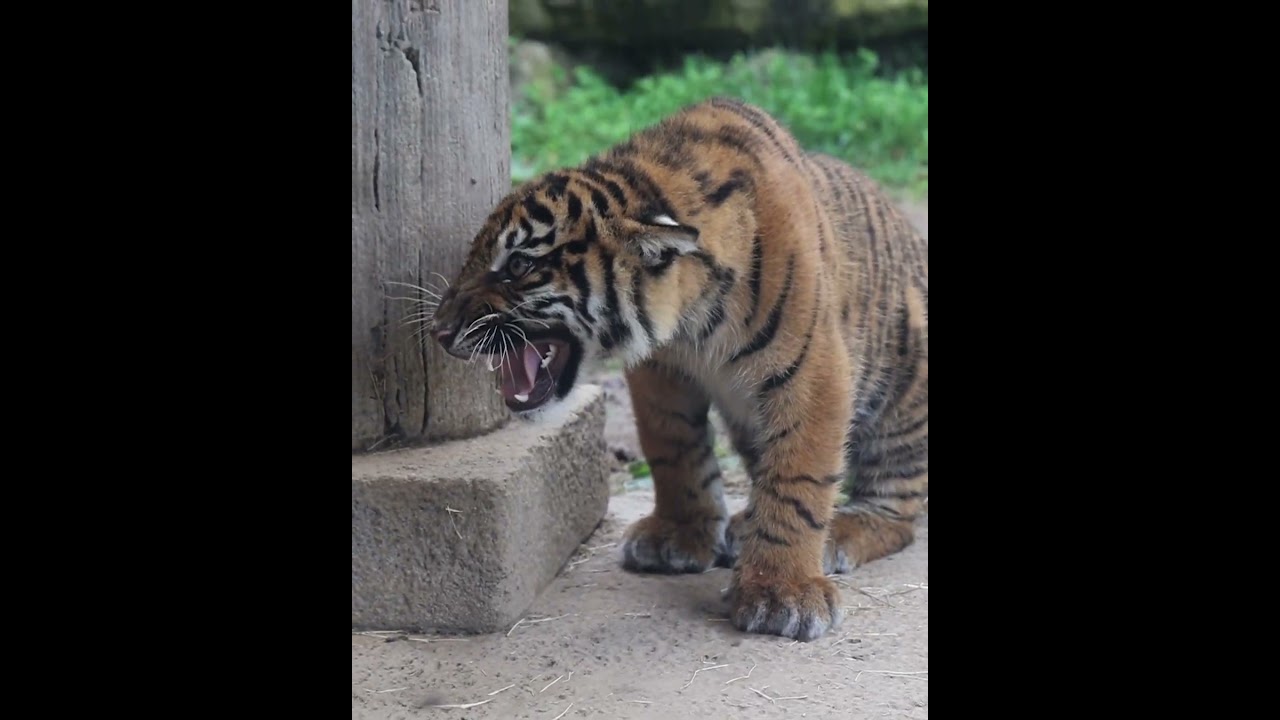– The significance of Tiger Cubs’ First Day in Tiger Crossroads for zoo management and wildlife conservation.
– Insights into the behaviors and needs of tiger cubs during their initial exposure to Tiger Crossroads.
– The role of technology and innovative practices in enhancing the visitor experience and education in wildlife conservation.
– The importance of ethical considerations and conservation goals in designing and managing modern zoo habitats like Tiger Crossroads.
Tiger Cubs’ First Day in Tiger Crossroads represents a pivotal moment for the animals and the professionals dedicated to their care and conservation. This event marks the beginning of a journey for these young tigers, introducing them to a carefully constructed environment that simulates aspects of their natural habitat. This milestone is critical for these cubs’ individual growth and well-being and the broader objectives of wildlife conservation and educational outreach inherent in modern zoo management.
Observing tiger cubs as they explore Tiger Crossroads for the first time offers invaluable insights into their developmental needs and behaviors. Like all young animals, tiger cubs exhibit a natural curiosity and playfulness that is crucial for their learning and development. This initial exploration is a key aspect of their socialization, helping them to establish bonds with their siblings and understand the limits of their environment. For caregivers and conservationists, understanding these behaviors is vital for ensuring the cubs’ welfare and planning future conservation efforts.
Integrating technology and innovative practices plays a significant role in enhancing the experience of visitors to Tiger Crossroads. By incorporating interactive exhibits and educational materials that detail the lives of tiger cubs and their significance to the ecosystem, zoos can engage visitors in meaningful ways. This enriches the visitor experience and promotes a deeper understanding of the importance of wildlife conservation. Technologies such as live feeds allow visitors to witness the growth and development of tiger cubs in real time, fostering a connection between the public and these majestic animals.
Ethical considerations are at the forefront of designing and managing habitats like Tiger Crossroads. This involves creating environments that meet tiger cubs’ physical and psychological needs, allowing them to exhibit natural behaviors while ensuring their safety. The layout of Tiger Crossroads, for example, includes features such as water elements for swimming, shaded areas for resting, and ample space for play. These features mimic the cubs’ natural habitat, providing them with opportunities for learning and exploration that are essential for their development.
Furthermore, conservation goals underpin every aspect of Tiger Crossroads. This exhibit serves as a home for tiger cubs and a platform for raising awareness about the threats facing tigers in the wild, such as habitat loss and poaching. By fostering an emotional connection between visitors and tiger cubs, Tiger Crossroads encourages public support for conservation efforts. This support is crucial for the success of programs aimed at protecting tigers and their habitats across the globe.
In summary, Tiger Cubs’ First Day in Tiger Crossroads embodies the complex interconnectedness of zoo management, wildlife conservation, and educational outreach. It highlights the critical role of zoos in conserving endangered species and the importance of creating habitats that cater to the needs of animals while educating the public about conservation challenges. Through careful planning and ethical management, exhibits like Tiger Crossroads can contribute significantly to the global effort to conserve our planet’s remarkable biodiversity.
*****
Source Description
Bulan, Kirana and Zara can now be seen at Tiger Crossroads! The cubs and mom, Anne, will be out daily from 9 am until noon – although weather and animal care factors may occasionally prevent the cubs from being outside. After noon, Felix (dad) will be in the Tiger Crossroads habitat for guests to see.

